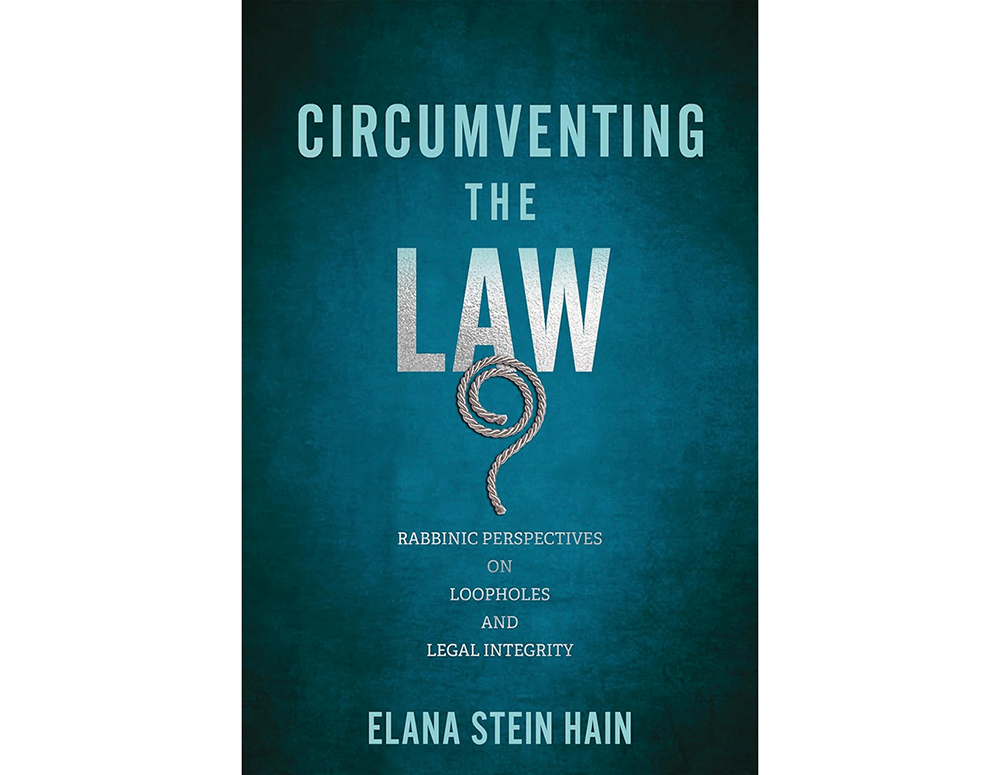
Reviewing: “Circumventing the Law: Rabbinic Perspectives on Loopholes and Legal Integrity,” by Elana Stein Hain. University of Pennsylvania Press. 2024. English. Hardcover. 240 pages. ISBN-13: 978-1512824407.
When the Almighty said in Devarim 6:4, “Hear O Israel, the Lord is our God, the Lord is one,” he made it eminently clear that He is one and absolutely one. Anyone reading the verse should be able to see that with no ambiguity.
Yet there are Christians who use the Shema to prove the Trinity—from the three mentions of God’s name in the verse to other verses using the word Echad, trying to show that Echad can mean a fusion of many things into one. The implication is that no matter how clearly something is written, even if written by the Ultimate Author, it can still be misinterpreted and misused.
That also applies to legal codes. No matter how precisely the legal code is written, there will always be ambiguity. Within the written law, there will forever be tension between the letter of the law and the spirit of the law.
Dr. Elana Stein Hain addresses this tension in Circumventing the Law: Rabbinic Perspectives on Loopholes and Legal Integrity (University of Pennsylvania Press). In this well-written academic work, she examines how the rabbis of the Talmud dealt with the nature of loopholes, which the Talmudic term for is ha’aramah.
In science, there is a concept known as simultaneous invention, which posits that most scientific discoveries are made independently and simultaneously by multiple scientists and inventors. This concept may also apply in the realm of Halacha, as Rabbi Daniel Feldman’s simultaneously released Letter and Spirit: Evasion, Avoidance, and Workarounds in the Halakhic System (Maggid) addresses the same topic. I will review that book in the coming weeks.
These are gaps in legal systems, which every legal system has. Any system can be corrupted if loopholes become pervasive. On the other hand, there are times when a loophole needs to be created for legal systems to be fluid in dynamic environments.
In this densely written work, Stein Hain examines the evolution of rabbinic attitudes toward ha’aramah and compares those attitudes to other cultures and legal systems. She notes that the rabbis of the Talmud use ha’aramah as a tool for upholding principles that apply generally within Jewish law. Moreover, they draw a line when illegitimate goals or problematic processes undermine the integrity of the law. This system was put in place to preserve reverence for the Jewish legal system.
The rabbis understood that ha’aramah was a mechanism that could be used well or poorly. Stein Hain contrasts the rabbis’ approach with the Roman approach to legal circumventions. Their approach was to embrace legal fiction as a strategy for circumventing the law. The rabbis purposely did not take that approach as it could undermine the spirit of the law.
There are various types of ha’aramah that the Talmud Bavli and Talmud Yerushalmi use, which the book details in depth. The Talmud Bavli has a more restrictive approach to ha’aramah, as the rabbis worried about a decline in observance if ha’aramah was overused. The use of loopholes, especially those that are not subtle, can erode people’s fealty to the law or confuse them about the law.
Four of the most well-known ha’aramaot, which Stein Hain only deals with in the book’s epilogue, are prozbul, eruv, eruv tavshilin and mechiras chometz. She notes that, in truth, these are not examples of ha’aramah but are rather public policy mechanisms. They are, in fact, rabbinic enactments, also known as takanot, designed to ameliorate pervasive complications.
For example, prozbul, which transferred individual private loans to courts making them ineligible for cancellation during Shmita, enabled poor people to continue to receive interest-free loans before Shmita while simultaneously protecting the lender’s money.
This enactment was put into place by Hillel because he was worried about undermining the biblical commandment to lend to the poor if people would refrain from doing so. He created the prozbul not as a ha’aramah but rather as a takanah. But rather than being a private-use loophole, it is a public service meant to solve a widespread problem.
Ultimately, the rabbis used ha’aramah in a very limited and controlled manner. Stein Hain expands on that, and this book is an interesting look at this important but often maligned and misinterpreted Talmudic topic.
Ben Rothke lives in New Jersey and works in the information security field. He reviews books on religion, technology, philosophyand science. Follow him on Twitter at @benrothke. His new book was recently published: The Definitive Guide to PCI DSS Version 4: Documentation, Compliance, and Management.












